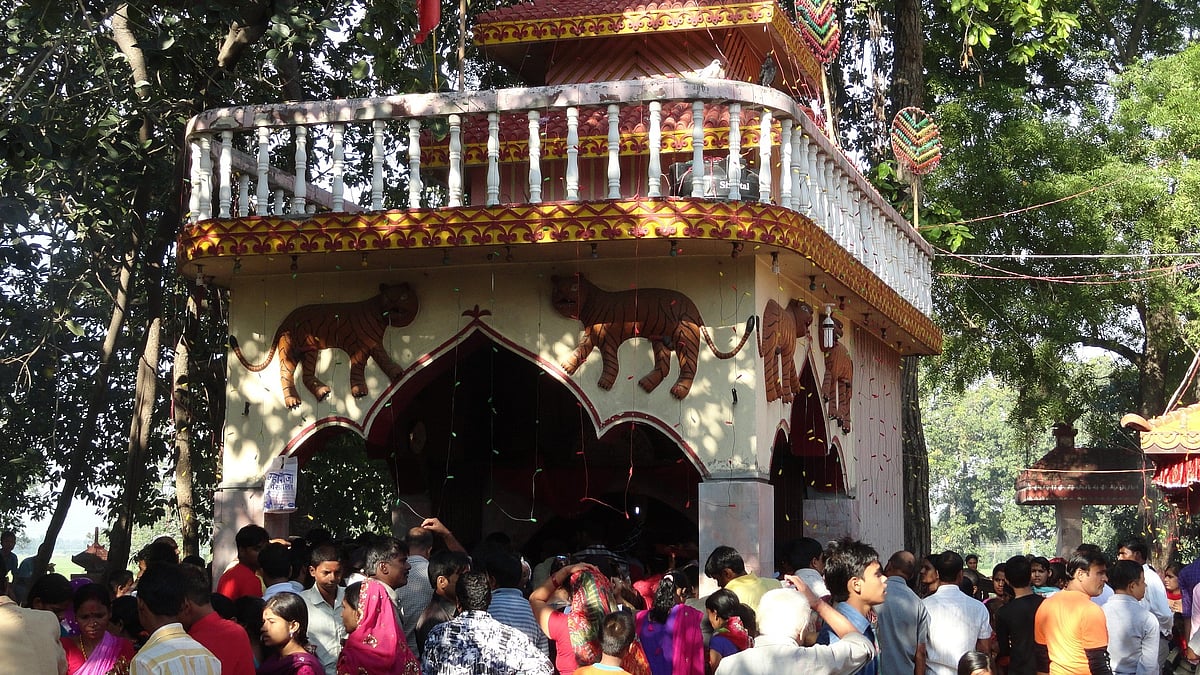I need to make an upfront disclosure; I am a sucker for Bollywood. They provide such dizzying non-stop entertainment that you have to be a thoroughbred bore to dislike them. Just one scene from the masterful creator of fantasy films, Manmohan Desai, would be enough to augment your adrenaline. A pumped-up Amitabh Bachchan, after bashing several henchmen of the creepy villain, chases the escaping lout. There is only one problem, the villain is already on a dirt-track runway onboard a small airplane, while Mister Mard is galloping on a white horse.
But for Bachchan, any trapeze-artistry required to hop onto the transport vehicle zooming ahead is like a walk in the park. He throws a long lasso at the airborne plane that hooks immediately in a perfectly rounded knot at the tail of the plane throwing it off balance. Bachchan then confidently leaps off the horse onto the plane, and I leave the rest to your wildest imagination. Thankfully, the poor horse was spared the pyrotechnics perhaps to avoid certain animal rights violations or the absence of CGI then.
While most of us laugh raucously at this ridiculous excess now, I remember being thrilled and clapping with the audience when Bachchan did this Superman stunt ( the 'double' was the real hero actually ). Seriously, how can we now mow down these illogical phantasm-creating dream-merchants?
Bollywood has no pretensions of being an epitome of professional perfection. It is far from ideal, it abounds with human fallibilities , like the rest of us. It even dishes out terrible dishwater stuff, sporadically. But yet, Bollywood is the country’s ultimate stress-buster. Not everyone can afford to go to a Kerala Ayurveda camp, or the verdant Himalayan five-star resorts at hill stations to do meditation exercises at the crack of dawn. Or hire expensive therapists. Bollywood makes us laugh (I remember the entire Inox theatre literally in the aisles when watching 'No Entry') and cry (the last scene of 'Devdas' at New Excelsior had many wringing their handkerchiefs). Even in its most trashy productions, there is a method in the chaos.
I grew up in the Rajesh Khanna-Amitabh Bachchan age; between them, we got our ultimate entertainment. The Romantic Phenomenon vs the Angry Young Man. It was not so much just the movie experience, but the build-up to it, right from the mahurat shot and the little tit -bits that followed in the gossip columns of Filmfare, Stardust, Cine Blitz and Star & Style. And then of course there were the huge full-page advertisements that followed in The Times of India at the time of release.
I used to be most excited going to book the ticket, standing in queue for hours. As we would near the ticket counter, our hearts would palpitate with unrestrained excitement. The tickets were usually of different colours for Stall ( front and rear), Dress Circle and Balcony. Once the herculean task was accomplished, we returned with triumphalism written over our countenance. On the day of the movie, we wore smart clothes and shiny shoes and reached the theatre at least half-an-hour in advance, to have Sosyo or Mangola along with those Irani samosas, shaped like an equilateral triangle. It was like a family picnic. And no matter which film you saw, no matter how empty-headed and silly, it made you smile.
One of them was Amar Akbar Anthony (it is hard to not imagine social media trolls going berserk in today’s sulphuric climate against the film’s syncretic title). It was released in 1977 and had three popular heartthrobs in it : Amitabh, Vinod Khanna and Rishi Kapoor. And therefore, it had to have three heroines too (Parveen Babi, Shabana Azmi and Neetu Singh, coincidentally belonging to the same religious community as the respective heroes); that was symmetrical secularism, synchronised to a T. And each one got the same screen-time.
For us, multi-starrers were 'total paisa vasool'. AAA has to be seen to be believed; children separated at birth, adopted in three different faiths bumping repeatedly against each other, and lost parents crossing paths, yet miraculously missing each other. It was a consummate fairy-tale with the most exhilarating twists and turns. And the more bizarre it got, the more uproarious was the impact; all three contribute in a blood transfusion scene for their mother.
Watching AAA, it seemed that the entire Mumbai lived in the same crowded chawl . At one point, the perennial mother, Nirupa Roy, magically recovers her eyesight in a temple after some laser-like lights emanate from a Sai Baba statue. Comparatively, multiplexes nowadays are such sanitised bores (despite their curated menus), because when AAA played in the theatres (every one of them was single-screen) people would actually dance, stand and clap, and one heard the sound of jingling coins thrown on the floor. It was collective joyousness and everyone participated in the wild mirth with unbridled abandon. The madness has continued unabated, despite competition from hyperventilating news channels, soap operas on the small screen, and web-based OTT platforms. Bollywood still reigns supreme, but it’s asphyxiating. It needs to breathe.
It is this same film industry that has been recently painted as a scatological, hedonistic, drug-consuming doghouse with X-rated characters, sleazy sugar daddies, and manipulative, oligarchic merchants controlling its treasured infrastructure. And condemning its unguarded young vulnerable stars to oblivion. And even death. For the first time, there appears to be a clear ideological animosity between warring camps. Like India, it is a divided house, polarised. Once Bollywood reflected India’s reality, now that same reality has caught up with it.
The writer is a suspended Congress leader.










